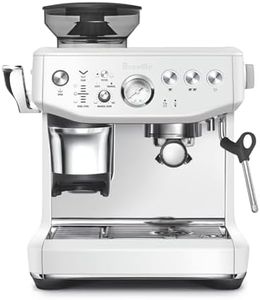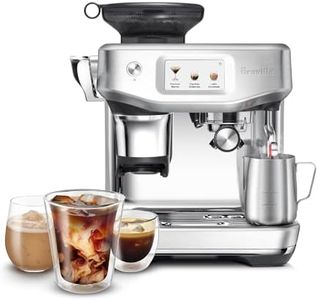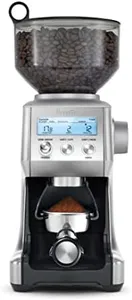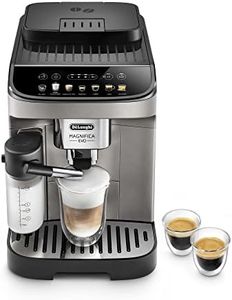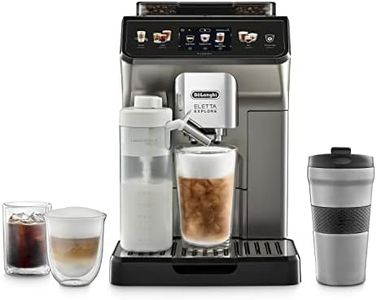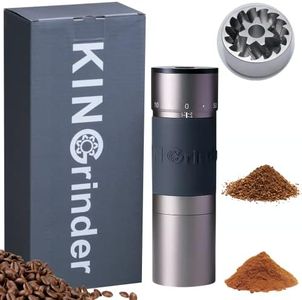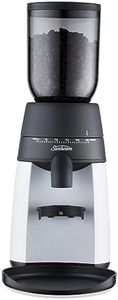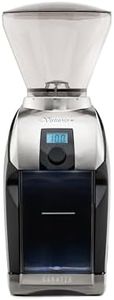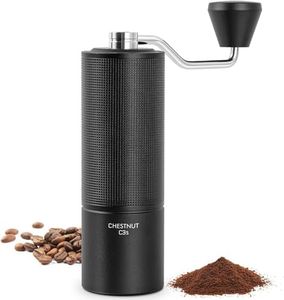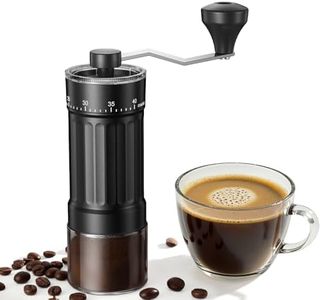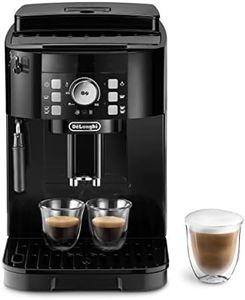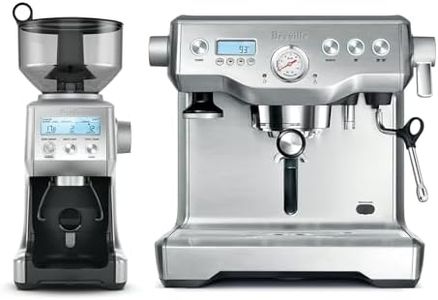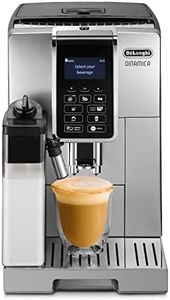We Use CookiesWe use cookies to enhance the security, performance,
functionality and for analytical and promotional activities. By continuing to browse this site you
are agreeing to our privacy policy
10 Best Espresso Grinders
From leading brands and best sellers available on the web.By clicking on a link to a third party's website, log data is shared with that third party.
Buying Guide for the Best Espresso Grinders
Choosing the right espresso grinder is essential for making delicious espresso at home or in a café. The grinder you select will greatly impact the flavor, texture, and overall quality of your coffee. Since espresso demands a fine and consistent grind, it's important to understand what features matter and how each aspect can affect your espresso-making experience. Your daily habits, coffee preferences, and expectations for convenience will help determine which grinder is best for you.Burr TypeThe burrs are the parts of a grinder that actually crush the coffee beans. Burr grinders use two revolving abrasive surfaces to grind the beans more evenly compared to blade grinders. The two main types of burrs are flat and conical. Flat burrs are known for uniformity and can offer great consistency, which often results in a sweeter and more balanced shot, but they may retain more grounds and can be a bit noisier. Conical burrs are quieter, tend to retain less coffee, and can be easier to clean, though some believe their grind can be a bit less uniform. For most home users, either type can make excellent espresso when quality materials are used, so consider your preference for cleanliness, noise, and ease of use.
Grind Size AdjustmentThis feature lets you change how fine or coarse your coffee grounds are. Espresso requires a very fine grind, but sometimes you’ll need to make small adjustments based on the beans you're using or your espresso machine. Some grinders allow stepless adjustment (you can tweak to any point), giving you maximum control over the grind. Others use stepped adjustment (preset clicks), which can be more user-friendly but less precise. If you like experimenting or want to get the most flavor possible, a stepless grinder offers more control. If you prefer simplicity, a stepped grinder may suit you better.
Grind ConsistencyGrind consistency refers to how uniform the ground coffee particles are in size. Consistency is crucial for espresso, as it ensures an even extraction, leading to better taste and crema. Well-built burr grinders usually provide greater consistency; some may still create a small amount of fine powder ('fines') or larger pieces ('boulders'). If you're chasing perfect espresso, prioritize a grinder known for exceptional consistency, as inconsistent grinds can lead to sour or bitter shots.
Dosing MechanismThe dosing mechanism determines how the ground coffee is delivered. Some grinders use timed dosing, where you set how long the grinder runs, while others use weight-based dosing for more precision. Manual dosing (where you control when to start and stop) is also common. If you want convenience and repeatability, an automatic timed or weight-based dosing grinder might be best. Manual dosing offers more control but requires more attention and practice.
CapacityCapacity refers to how much coffee a grinder can hold in its hopper and, in some cases, how much it can grind at once. A large hopper can be useful if you make many drinks or entertain often, but a smaller hopper reduces the risk of beans going stale. If you brew one or two shots a day, a smaller hopper or even single-dose grinders, which handle fresh beans per use, may help in keeping your coffee fresher.
Size and FootprintThe size and footprint refer to how much counter space the grinder takes up and how tall it is. Some grinders are compact and fit well in small kitchens, while others are quite tall or wide. Before buying, make sure you measure your available space, including any cabinets above, so the grinder fits easily into your coffee setup and doesn't crowd your workspace.
Noise LevelGrinders can be loud, varying depending on motor strength and burr design. If you make coffee early in the morning or have housemates or family to consider, a quieter grinder will be more considerate. Generally, conical burr grinders are quieter than flat burr grinders, and grinders with more robust casings tend to dampen noise better.
Ease of CleaningOver time, coffee oils and fine particles can build up in your grinder, affecting flavor and cleanliness. Some grinders are designed to be easy to disassemble for cleaning, while others are more complex and may require tools or extra time. If you want your maintenance routine to be quick and simple, look for a model with easy access to the burrs and smooth surfaces that wipe clean easily.
